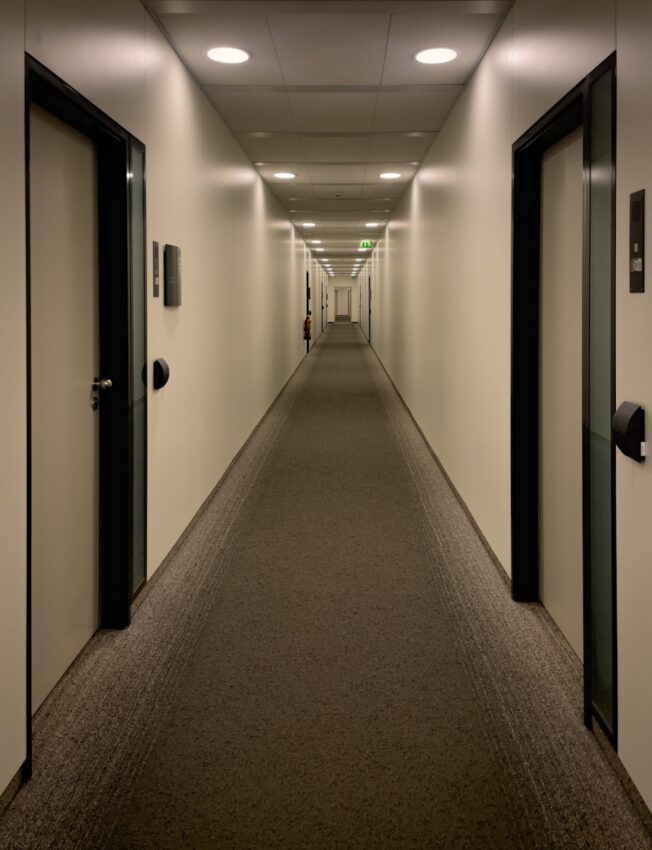When people talk about energy efficiency in buildings, the focus usually falls on insulation, HVAC systems, or solar panels. Floor access panels rarely make the list.
But in utility spaces—mechanical rooms, underfloor areas, and service corridors—they support the systems that keep everything running. These panels provide necessary access to plumbing, electrical, and HVAC components, but can also influence how well a building manages energy.

With the right features, floor access panels help limit heat loss, reduce unnecessary strain on equipment, and support a more stable indoor environment.
In this article, we’ll look at how floor access panels contribute to energy savings in utility spaces.
Helping Seal Air Leaks Before They Drain Energy
Many utility areas are surrounded by unconditioned spaces. If the access points between these areas aren’t sealed properly, heated or cooled air escapes, and outside air sneaks in.
Modern floor access panels are designed to close that gap. Products with gaskets or compression seals reduce airflow between conditioned and non-conditioned zones. Less leaking means your HVAC system isn’t constantly trying to compensate for lost air, which leads to lower energy usage and more stable indoor temperatures.
Supporting Thermal Performance Across the Building Envelope
A common weakness in utility spaces is poor insulation. Hot boiler rooms or cold mechanical shafts can create dramatic temperature swings, especially when they border conditioned rooms.
Uninsulated floor access panels often act as thermal bridges, allowing heat or cold to move into surrounding areas. This leads to higher energy consumption, added pressure on HVAC systems, and discomfort in adjacent spaces.
To address this, many floor access panels now feature insulated cores or insulation-compatible frames. They help stabilize temperatures and support the integrity of the building envelope.
Managing Moisture To Protect Energy Efficiency
Humidity affects comfort and increases energy use. Damp air takes more effort to cool or heat and often creates ideal conditions for mold and mildew, especially in utility areas. When moisture reaches adjacent conditioned spaces, it can disrupt temperature control and raise the need for dehumidification.
A moisture-resistant floor access panel can help prevent these issues. Stainless steel or aluminum models hold up well in wet environments, and gasketed frames provide a tight seal that helps keep damp air out of the building envelope.
Even small signs of moisture, like rusted frames or wet insulation around an old panel, can quietly impact efficiency. Controlling moisture helps preserve system performance and keeps energy use consistent over time.
Reducing Unnecessary Heat Exchange with Smarter Access
Utility spaces usually don’t need to be opened up every day. But when an access point is used often, or isn’t properly secured after use, it can disrupt airflow and temperature control across an entire section of a building.
Well-designed floor access panels reduce this risk. When they close flush and lock securely, they prevent drafts and lower the chances of conditioned air spilling into unconditioned areas or vice versa. Some models even feature spring-assisted lids or recessed handles that ensure the panel reseals with minimal effort.
Doing the Job Without Compromising Structure or Load-Bearing Needs
Access panels in floor applications have a tough job: they must seal tightly and handle whatever traffic or equipment moves across them. That’s especially true in utility spaces with forklifts, maintenance carts, or foot traffic from building engineers.
Fortunately, energy-saving performance doesn’t require compromising on strength. Many insulated and sealed floor access panels are load-rated for heavy-duty applications, supporting everything from foot traffic to vehicular loads.
Lowering Energy Costs Without Complicating Construction
Let’s zoom out. When all of these energy-saving benefits come together—better sealing, thermal resistance, moisture protection, durability, and maintenance access—the impact is clear. You cut operating costs and improve indoor comfort. Plus, this helps you extend the lifespan of your HVAC and mechanical systems by reducing overwork caused by leaks or inefficiencies.
The best part? Upgrading to energy-saving floor access panels doesn’t involve a complete redesign. These panels can be incorporated into new builds or retrofits with minimal disruption, offering a low-barrier, high-return solution for improving utility space performance.
Tips for Purchasing Energy-Efficient Floor Access Panels
Choosing the right floor access panel might not be the most glamorous part of your project, but it can quietly save you a lot of headaches (and money) down the line.
Look for a Tight Seal
Energy-efficient panels should shut snugly—no drafts, no gaps. Gaskets and compression-sealed edges help keep heated or cooled air right where it belongs, which makes a noticeable difference over time.
Think About the Space It Lives In
Utility spaces vary. Maybe you’re outfitting a boiler room in an apartment complex, or you’ve got a small laundry access point in a basement back home. For moisture-prone areas, choose rust-resistant materials like aluminum or stainless steel. For quiet rooms (like a home office above a mechanical space), go for something that seals well and muffles noise.
Ask About Green Building Compatibility
Working on a more sustainable build? Some floor access panels are designed to align with green building standards like LEED. Options made with recycled materials, low-VOC finishes, or those backed by environmental product declarations can help support overall certification efforts while still meeting performance needs.
Check Right Size
Oversized panels can lead to unnecessary heat loss, especially in conditioned areas. Undersized ones makes access a hassle and might force a bigger renovation. Choose a size that allows easy entry for tools and inspections without compromising efficiency or floor integrity.
Blend Access Into the Design
Sometimes, the best panel is the one no one notices. Flush-mounted or concealed floor panels can be tiled or finished to match the surrounding surface. These invisible access solutions work well in homes, offices, and upscale commercial spaces where clean, uninterrupted lines are part of the overall look. You still get full functionality, without sacrificing aesthetics.
To Sum Up
Utility spaces are easy to overlook but play a bigger role in energy performance than most people realize. Energy loss often begins in the background—under floors, behind walls, or in service areas that rarely get attention.
In both homes and commercial spaces, small choices add up. Floor access panels that are properly sealed, insulated, and built for the conditions help maintain indoor comfort, limit wasted energy, and support long-term efficiency.
